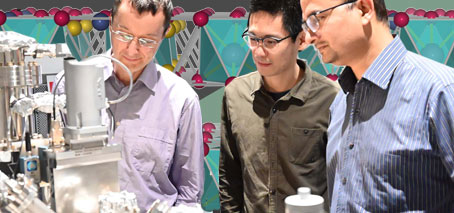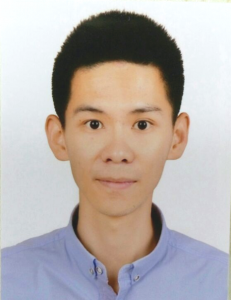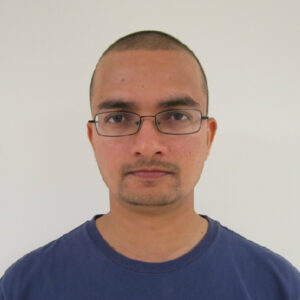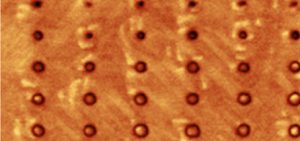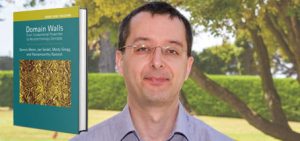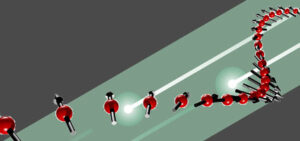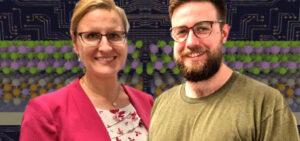
Van-der-Waals ferroelectrics have stable, layered structures with strong intralayer and weak interlayer forces.
A UNSW/Flinders University paper published recently in Nature Reviews Materials presents an exciting overview of the emerging field of 2D ferroelectric materials with layered van-der-Waals crystal structures: a novel class of low-dimensional materials that is highly interesting for future nanoelectronics.
Future applications include ultra-low energy electronics, high-performance, non-volatile data-storage, high-response optoelectronics, and flexible (energy-harvesting or wearable) electronics.
Structurally different from conventional oxide ferroelectrics with rigid lattices, van der Waals (vdW) ferroelectrics have stable layered structures with a combination of strong intralayer and weak interlayer forces (see figure).
These special atomic arrangements, in combination with the ferroelectric order, give rise to fundamentally new phenomena and functionalities not found in conventional materials.

From left, corresponding author Prof Jan Seidel (FLEET CI, UNSW), lead author Dr Dawei Zhang (UNSW), and corresponding author Dr Pankaj Sharma (FLEET Research Fellow, Flinders University), in the lab at UNSW
“Fundamentally new properties are found when these materials are exfoliated down to atomically thin layers,” says author Dr Dawei Zhang. “For example, the origin of the polarization and the switching mechanisms for the polar order can be different from conventional ferroelectrics, enabling new material functionality.”
One of these material’s most intriguing aspects is their easily stackable nature because of the weak van-der-Waals interlayer bonds, which means that vdW ferroelectrics are readily integrable with highly dissimilar crystal-structure materials, such as industrial silicon substrates, without interfacial issues.
“This makes them highly attractive as building blocks for post-Moore’s law electronics,” says author Prof Jan Seidel, also at UNSW.
From the perspective of applications and novel functionalities, vdW ferroelectrics present a wide range of opportunities for nanoelectronics owing to their easily obtainable ferroelectricity at the nanoscale, and dangling bonds-free, clean vdW interfaces that facilitate CMOS-compatible (current silicon technology) integration.
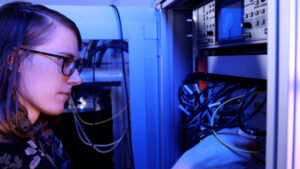
Co-author Dr Peggy Schoenherr (ex FLEET Research Fellow at UNSW, now at CSIRO). Credit: Grant Turner (Mediakoo)
The new review discusses experimentally verified vdW ferroelectric systems and their unique characteristics, such as quadruple-well potentials, metallic ferroelectricity and dipole-locking effects. It also discusses engineered vdW ferroelectricity in stacks of otherwise nonpolar parent materials created by artificially breaking centrosymmetry.
Additionally, innovative device applications harnessing vdW ferroelectricity are showcased, including electronic transistors able to beat the fundamental thermodynamic limits, non-volatile memories and optoelectronic and flexible devices. Recent progress and existing challenges provide a perspective on future research directions and applications.
“It’s a relatively new field, so there are still many challenges that need to be solved to realize the full technological potential of these materials,” says author Dr Pankaj Sharma (Flinders). “For example, we need to address large-area, uniform, wafer scale growth, and integration methods. These will allow development of futuristic low-energy electronics and computing solutions.”
Given the recent emergence of vdW ferroelectrics, the materials library of such systems is quickly evolving. This leaves room for new developments, such as multiferroicity and coupled functionalities of multiple orders, for example ferroelectricity and magnetism, and the functionality of domain walls in such materials.
The study
The paper Ferroelectric order in van der Waals layered materials was published in Nature Reviews Materials in October 2022 (D. Zhang, P. Schoenherr, P. Sharma, and J. Seidel, DOI 10.1038/s41578-022-00484-3).
The authors acknowledge funding from the Australian Research Council (Discovery, LIEF and Centre of Excellence programs).
Ferroelectric material studies at FLEET
Prof Jan Seidel leads a research team within FLEET, the ARC Centre of Excellence in Future Low-Energy Electronics Technologies. His team uses advanced scanning probe microscopy (SPM) to study functional materials at the nanoscale and atomic scale. These materials can be used as a platform for new, low-energy electronic devices developed by FLEET researchers tackling future low-energy electronics concepts.
Ferroelectric materials are investigated within FLEET’s Research theme 1, seeking to create a new generation of ultra-low energy electronics.
FLEET is an Australian Research Council-funded research centre bringing together over a hundred Australian and international experts to develop a new generation of ultra-low energy electronics.
More information
- Contact Prof Jan Seidel (UNSW) jan.seidel@unsw.edu.au,
- Explore the Seidel Research Group spm.materials.unsw.edu.au
- Follow FLEET at @FLEETCentre
- Visit FLEET.org.au
Team profile photos
Other ferroelectrics research at FLEET

Seeking answers in ferroelectric film patterning (Arkansas, UNSW)

Ferroelectric switching in indium-selenide (Monash, UNSW)

